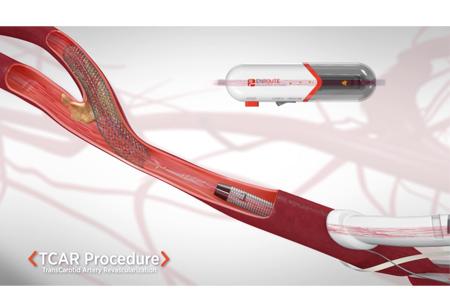Let's say you have a blockage in one of your carotid arteries, the major blood vessels in the neck, supplying blood to the neck, face and brain. A plaque blockage in one or both of these arteries means you have an increased risk of stroke. Getting rid of that blockage could save your life.
Options for treating the blockage carry a risk of causing a stroke during or immediately after the procedure. Today, a minimally invasive procedure known as TCAR, or transcarotid artery revascularization, is being used by Venkatesh Ramaiah, MD, an HonorHealth vascular and endovascular surgeon, to minimize that risk of stroke.
Restoring blood supply in the carotid artery
Before TCAR, carotid revascularization options to restore a free-flowing blood supply in the carotid artery have been carotid endarterectomy (CEA) and carotid artery stenting (CAS) via the groin.
"CEA has been the gold standard of surgical treatments," said Dr. Ramaiah. "It has a low stroke risk and has stood the test of time. In high-risk patients, such as those who have had previous neck surgery and those who have received radiation to the neck, carotid endarterectomy carries higher risks."
The other option has been transfemoral, filter-protected carotid artery stenting. "While this procedure is more patient friendly because it's not open surgery, it carries a stroke risk because of the steps involved in doing it. "The specialist needs to move the catheter up through the femoral artery in the groin, crossing the diseased arch of the aorta and crossing the blockage in the carotid artery without protection," Dr. Ramaiah said. "The stroke risks can be much higher with this procedure."
TCAR is minimally invasive
With the right patients, TCAR offers these advantages:
- A small incision right above the clavicle (collarbone) gives the surgeon direct access to the blockage in the carotid artery.
- Reduced stroke risk. The surgeon places a sheath in the artery and connects it to a sheath in the femoral vein. This reverses the blood flow away from the brain. Reversing the blood flow prevents clots and bits of plaque from traveling to the brain. The filter placed near the femoral vein traps these particles. This technique allows the physician to treat the blockage with protection already established. Once the blockage has been treated, blood flow is reestablished normally back to the brain.
The FDA approved the TCAR procedure in 2016 as a minimally invasive tool, especially for high-risk patients. Patients recover more quickly, the incision is so small that scarring is minimal, and patients suffer fewer complications.
"We know that 15 to 16% of ischemic strokes occur because of blockages in the carotid artery," said Dr. Ramaiah. "TCAR is an exciting new way to prevent strokes."
